By Pierre Bismuth
Pierre Bismuth’s work explores the multiple manifestations and products of knowledge and culture, engaging in a constant process of translation, moving from one form to another, from one logic to another as if in search of a hidden meaning. Bismuth’s transformations aim at creating a new, parallel reality, not an answer but a new question. The rules under which this new reality operates sabotage the unique and fixed meaning of the cultural products from which it is initially derived. His works are metaphors of human activity – proliferating and polluting until the logic and the energy of the system that engenders them is exhausted. In these seemingly aimless and hopeless activities Bismuth’s work manages to find the means for an effective transformation and ultimately to formulate a promise: no matter how structured and limited human activity and creativity are, freedom can be rescued from any closed system. *1963 in Paris, lives in Brussels
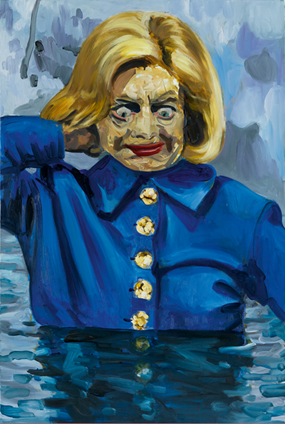
Courtesy Team Gallery and the artist
Dawn Mellor
I think she is an atypical artist even though she seems to be engaged in a very traditional kind of image/painting-making that shouldn’t actually interest me normally, but she does it in such a brutal and infantile way that I find it exiting and liberating. She uses painting to appropriate images of celebrities and inflicts on them a series of extreme and cruel punishment. It is as if the capitalist lie about fame, success, progress and happiness delivered by the media had suddenly gone bad, decomposing its very prominent representative icons, as if the portrait of Dorian Gray were not absorbing the evil side of the individual but the cruelty and the inhumanity of the whole system. In The Portrait of Dorian Gray, morality was on the scale of the individual consciousness; in Dawn Mellor’s work the guilt is collective and the paintings absorb the toxicity of the spectacle. *1970 in Manchester, lives in London
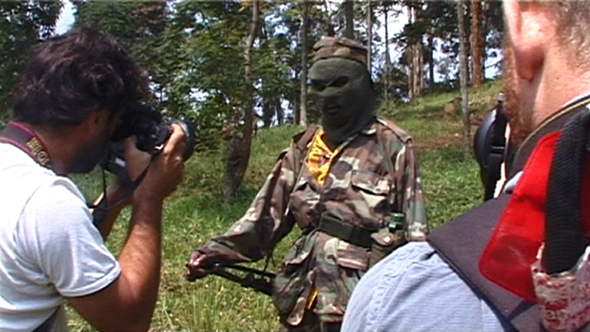
Courtesy the artist and Galerie Fons Walters
Renzo Martens
Renzo produced probably one of the most controversial works of the last 10 years. His documentary Enjoy Poverty, shot in the Congo, shows in an extremely straightforward manner the way the fight against poverty has become a lucrative economy for developed countries. Renzo’s founding postulate is that the capitalist exploitation of poverty can’t be outmanoeuvred and so he decided to exacerbate it, to push its logic to the point of total insanity. He went to the workers exploited on the plantations to teach them the rules of the capitalist system and make them conscious that poverty is somehow their natural resource and that they should learn how to make profit out of it. One example was to take and sell pictures of their own misery rather than leaving this task to the international press agencies. This is definitely an important and disturbing film, hyper-objective while at the same time totally denouncing the scam of documentary and journalistic objectivity. *1973 in the Netherlands, lives in Amsterdam, Brussels and Kinshasa
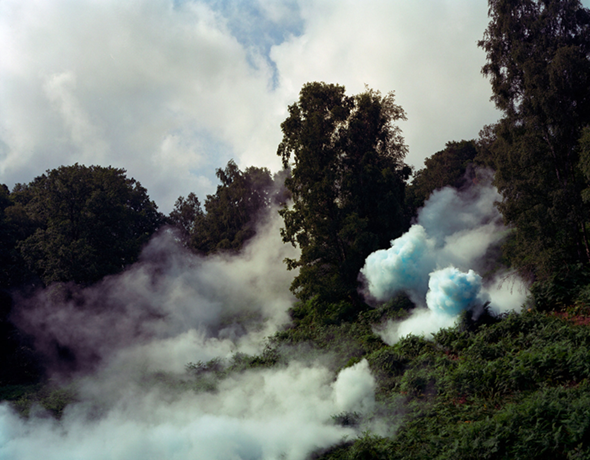
Courtesy Bugada & Cargnel, Paris
Cyprien Gaillard
Despite my scepticism as regards art world consensus and a nostalgic aspect of the work I do not share, I think Cyprien’s success is totally deserved. He is a good example of someone whose first motivation is an interest in history and questions of culture more than in the expression of the self. His work starts with the observation of how today’s urban planning implies the necessary destruction of a modernistic patrimony and how part of history is simply removed from site. His strategy is to transform those moments of destruction into events and/or monuments. By doing a work of art he inscribes into history somemoments that shouldn’t have been recorded. He literally historicizes and monumentalises the supposedly irrelevant transitory moments of history. Cyprien found an interesting way to regain and re-appropriate the questions of the public sphere and the monumentality on a realistic yet ambitious individual level. I like how he resolves his work in the most direct possible way without looking for any added artistic value. *1980 in Paris, lives in Paris and Berlin
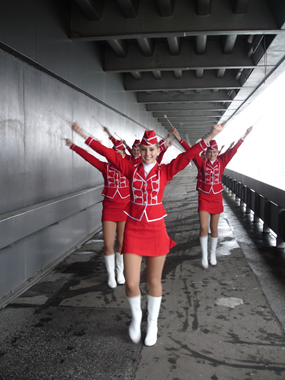
Manifesto of Futurist Woman (Let's Conclude), 2008
Courtesy of Collectiva, Berlin
Anetta Mona Chişa & Lucia Tkáčová
Their work is based on an interpretation of history but has a twofold dynamic – on one hand there is serious historical research about questions of culture and on the other, a strong will to deconstruct the system of contemporary art in its most trivial and petty aspects. This is performed through a strange levelling of references, from the punctuation in Marx’s Capital to utilitarian objects stolen from contemporary art galleries. There is also something very relaxed in the attitude. The works look fearless, with an air of insolence. The artists are very conscious of the fact that all systems are coded. If you don’t know the code you find yourself in front of something that is either opaque or has no apparent value. *in Romania / *in Slovakia, lives in Prague
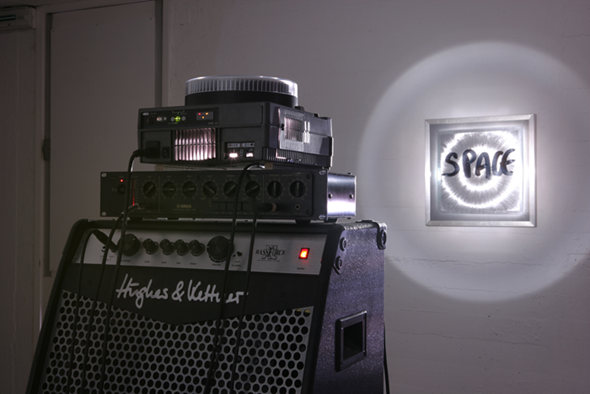
Arnaud Maguet
His work is the one I know the least here but his main subject of interest is music and so is mine. I have the feeling he succeeds in creating a common ground between music and visual art. Arnaud’s works wouldn’t exist without music and could not exist outside of the visual arts. He has also a music label, Les Disques en Rotin Réunis, which publishes his music and that of other artists. One of my favourite works is Prospective XXIè siècle, a slide-projector projecting on a slightly psychedelic piece of silver paper, revealing slide by slide the lyrics taken from a Sun Ra musical piece »space is the place, there is no limit«. The projector is placed on a guitar amplifier and the sound of the changing slides is amplified through an echo-chamber. This pile of equipment is an absurd but perfect reunion of foreign elements, as if the best way to create a unity out of two things is to just put them together. In the end, the combination of visual and sound devices works together as if the alliance of the two domains were created by the machines themselves, beyond the control of artist. *1975 in Toulon, lives in Nice
